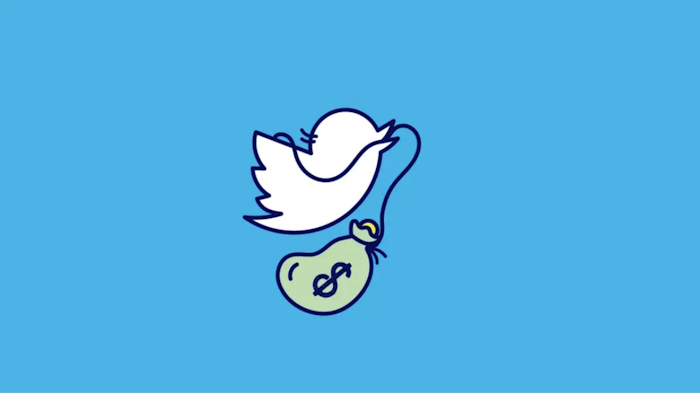April 2025 Tariff Update: How New U.S. Trade Policies Will Impact Brands and Consumers
Introduction: A Tectonic Shift in Global Trade
Just two months after announcing the first wave of tariffs, the Trump administration introduced an even broader and more aggressive trade policy. On April 2, tariff rates on goods from countries like China, Vietnam, India, and South Korea doubled or more. Some categories were faced with tariffs as high as 50%. Mexico and Canada, who were hit with 25% tariffs in February, saw no further changes, but the real shift was in scope: the tariffs expanded far beyond industrial categories into consumer-facing goods—apparel, home furnishings, electronics, and even coffee were placed squarely in the crosshairs.
Expanded Tariffs on Key Trade Partners
China Takes Center Stage with 125% Tariff Spike
However, in a move announced today, the Trump administration has shifted course, implementing a 90-day pause on reciprocal tariffs for most U.S. trade partners—replacing them with a universal 10% tariff during the negotiation period. China is the exception: tariffs on Chinese imports have increased immediately to 125%, as the administration singles out China for its perceived trade imbalances and lack of cooperation. While this pause may ease pressure on some countries in the short term, it does not roll back the sweeping hikes already imposed in April. Instead, it reinforces that tariffs remain a key pillar of this administration’s strategy—and that China remains the central focus. For brands with exposure to China or categories tied to global trade, this momentary reprieve does little to change the longer-term reality: tariffs will continue to shape business strategy in 2025.
Temporary 10% Tariff for Most Trade Partners
This universal tariff introduces a transitional buffer for most U.S. allies, allowing time for negotiations while still increasing the cost of imports overall. Brands and consumers will need to brace for continued volatility until a long-term framework is agreed upon.
The End of De Minimis: eCommerce Disruption
Low-Cost Giants Like Shein & Temu Face Rising Costs
If you read our February POV, you know we flagged the potential closure of the “De Minimis” loophole as a major strategic shift. That’s now official. This change eliminates the ability for ultra-low-cost retailers to sidestep duties by shipping directly from overseas. Retailers like Temu, Shein, and Wish built much of their U.S. strategy around this loophole, but in its absence, their cost structures—and pricing power—will fundamentally shift.
Opportunity for Traditional and DTC Brands
For traditional and DTC brands, this could open a rare window: reduced price undercutting from offshore competitors and a more level playing field in digital marketplaces. However, as with any broad policy change, upside is tempered by risk. The same cost increases that pressure discounters will simultaneously impact consumers across the board.
The Ripple Effect on Profitability and Pricing
Absorbing Costs vs. Passing Them to Consumers
Even if your products aren't directly affected by the new tariff rates, the ripple effects will be hard to ignore. For brands with supply chains tied to countries like China, Vietnam, or India, increased tariffs mean higher costs of goods sold (COGS). This creates an urgent need to reevaluate profitability. Brands will face a tough decision to either absorb the increased costs, which will squeeze margins and strain cash flow, or raise prices and risk suppressing conversion rates and overall demand. Either path can impact marketing performance, forcing reconsideration of paid media strategies, efficiency targets, and growth planning.
Consumer Impact: From Brand Loyalty to Budget Sensitivity
Unfortunately, the effects won't stop with brands—consumers are now at the epicenter of the trade controversy. The widespread cost pressure will influence consumer behavior across all categories, and not just those facing direct tariffs. As wallets tighten, necessity will drive shoppers to become more selective and less able to purchase based on loyalty to specific brands. Even businesses unaffected at the product level will likely feel the shift in how, when, and where customers choose to spend. As costs rise for essential goods like gas and groceries, consumers will face higher price sensitivity to non-essentials like apparel. Understanding this broader economic context is critical for any brand planning its next move in today’s turbulent market.
Brand Strategy Reset: 2025 Recommendations
We’ve adapted our February recommendations to reflect the expanded scope of impact and the newly confirmed policy changes.
1. Rebuild Profitability and KPI Models
If your product costs are changing—or your pricing strategy is evolving—rebuild your financial model. Reassess CAC, AOV, and contribution margin across campaigns. If needed:
Make budget and media mix changes in staged phases
Prioritize incrementality over platform attribution to avoid over-indexing on seemingly “safe” channels
2. Rethink Pricing with Data-Driven Testing
Look back at past price changes. What happened to CVR, AOV, and LTV? Break out results by audience segment (income, acquisition vs. retention). Also consider:
How substitutable is your product?
Are you in a high-sensitivity category?
What’s your current pricing power?
Let data—not assumptions—guide your next move.
3. Implement Price Increases Strategically
Transparency and testing go a long way:
Start small: Roll out increases to 5–10% of SKUs or customer segments.
Monitor the impact: Track margin, churn, and long-term customer behavior.
Communicate clearly: Customers accept price increases more readily when the “why” is explained.
Add value: Consider loyalty perks, free returns, or exclusive offers to maintain trust.
4. Strengthen Differentiation and Brand Equity
With price-based competition easing slightly (thanks to De Minimis reform), now is the time to double down on brand equity:
Sharpen your USP: Use voice-of-customer data to refine your positioning.
Invest in brand: Explore cost-effective strategies—organic, video, PR—that build recognition over time.
Stay in dialogue: Talk to your customers often. Understand what trade-offs they’re making, and why.
Conclusion: Not Just a Policy Shift, But a New Market Reality
The historic tariffs unveiled in April mark a turning point in the 2025 market landscape. Yes, this reshapes trade policy, but more importantly, it reshapes how consumers will spend - and how brands will compete. The end of the De Minimis loophole may level the playing field, but higher household costs are just as likely to flatten overall demand. In order to weather the coming storm, brands will need to balance agility and empathy with clear-eyed strategy. We'll continue tracking changes and sharing what it means for marketers.
P.S. Tariffs Derailed TikTok’s Deal. That’s a Signal for Every Brand
Earlier this month, a bipartisan deal to restructure TikTok’s U.S. ownership was nearly done—until a 125% tariff on Chinese imports shifted everything. China pulled its support. The deal froze. And TikTok’s fate is back in flux.
This confirms what we said in our recent TikTok guidance: even when a ban seems unlikely, uncertainty has a cost. Ultimately, the strategic implications go far beyond one app:
Tariffs are now a tool of leverage. If they can block a multi-billion-dollar tech deal, they can disrupt any cross-border brand strategy.
China remains in the administration’s crosshairs. From platforms to products, anything with Chinese ties is in play.
The market reacts to instability. TikTok’s CPMs dropped -80% YoY earlier this year, while Pinterest’s jumped +120%. Expect more pricing volatility as uncertainty deepens.
The TikTok ban is now a higher-probability risk. What was once seen as political theater is now part of a live trade negotiation. Brands should revisit contingency plans and actively scenario-plan across media and creative. The time for “wait and see” is over.
The bottom line? Keep leveraging TikTok’s value—but have a backup plan ready. Build cross-platform creative now. Model CAC and ROI changes. And, of course, stay plugged in to the rapid and ever-changing discourse surrounding TikTok.







